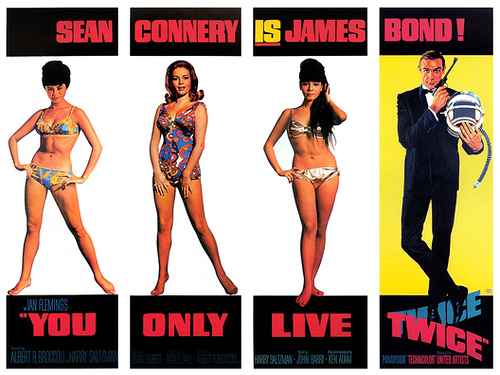One saying often said in the Film Industry is that, if you want to go it alone in creativity (versus collaboration), then “buy yourself a paint set.” Whether we like it or not, that cheap paint set is becoming all it takes to make a movie. Or at least almost. I attended three events this last year about emerging technology which demonstrate that the creative threshold is continually dropping for the filmmaker.
The Directors Guild of America (DGA) hosts the DGA Digital Day to exhibit and discuss new technologies and techniques. About five years ago, two companies presented new 3D technology. Two years later, six companies presented their wares. A tech surprise was the Panasonic AG-3DA1 Production System, which put a 3D camera system within reach of many small companies. Another tech wave is the expansive use of Canon Digital Still cameras into the professional production arena because they can record full Hi-Def. Major TV show episodes embraced the technology. The small DSLR’s can be purchased for less than $2,000 and outfitted with a variety of professional gear, including Follow Focus and matteboxes. The Canon EOS 5D is leading the way.
Scott Billups, author of the essential “Digital Moviemaking 3.0,” broke down complex digital concepts into accessible analogies like boxes of crayons. Simple, but understandable. The filmmaker must understand the limits of his technology. Great cinematographers like Greg Toland, James Wong Howe (who Billups worked with), Gordon Willis, and Vittorio Storaro worked in a photochemical process. They were first photographers, framers, and interpreters of the dramatic moment. No more. Today’s digital cinematographer must weigh formats, methods, and other emerging innovations for image capture of the dramatic moment into its final workflow for post-production and distribution. The workflow discussion dovetailed into a panel discussing web series. The creator of “The Bannen Way” (available on Netflix) said that their strategy was to produce three-minute webisodes to be compiled into a thirty-minute series and, ultimately, a marketable DVD full-length DVD.
DGA Digital Day and a subsequent “Avatar” DGA seminar both discussed the “Smart Stage” or “Virtual Back Lot.” The Virtual Back Lot is, essentially, the use of a green screen stage with 3-D, motion capture suits and practical set dressing or physical models. These stages utilize digital filmmaking and green screen techniques to virtually eliminate the construction of huge sets and time-consuming driving shots. Not that you avoid the cost of modeling those digital sets.
The “Avatar” seminar featured the UPM, Assistant Directors and the VFX team discussing their production methos. At some point during production, the filmmakers had to stop and come up with nomenclature to quantify the new processes in this digital frontier to avoid misccomunication. Now that’s cutting edge. The “Avatar” clips demonstrated the “interactive” use of 3D models (in the computer), live actors against a greenscreen stage and other actors in Motion Capture suits. Check out this YouTube video on “Avatar.”
The Virtual Back Lot can virtually (had to use it!) eliminate driving shot setups. When you shoot driving shots, the entire crew stands around while the actors go off into a vehicle rigged up on the trailer and toed around the city to capture the background. The rigging is a time-consuming situation, and time is money. With green screen techniques, cameras can be set anywhere. You also might just need to rent a car just for a single day rather than three days to get the shot. Stargate Digital made a presentation. Check out Stargate Digital’s website. Review the Virtual Backlot, Visual Effects, and Driving Shot tabs to understand the possibilities of using green screen and 3-D software to expand your story and work within your budget.
The “live” quality of the Smart Stage’s interactive elements means that the director doesn’t lose touch with authentic performances in relation to a 3D modeling world. And the actor’s interaction with, say, Zombies, aliens, or avatars as placemarked by live human actors. Smart Stage is all the rage with the major studios. I attended a showcase for the Universal Smart Stage. But that setup is not really within the means of the independent filmmaker. Just too expensive. The Smart Stage’s place for the Indie filmmaker is to replace locations and justify creative digital model implementation as compared to higher alternative costs. In addition, if in Los Angeles, you might schedule an expensive actor’s days sequentially on a Smart Stage – keeping their salary down or making a better deal.
In my discussions with VFX companies, the Smart Stage is not a one-stop-shop process. While the technology is available, the practical application is not turn-key. Yet, with diligent focus on the script and with practical considerations taken into account, you can come up with emotionally resonant scenes which can be done using a modest Smart Stage approach. The approach might save hundreds of thousands of dollars in a production’s budget. And maybe just get your film – your message in tact – up on the screen.

COMMENTS
Please let us know if you're having issues with commenting.